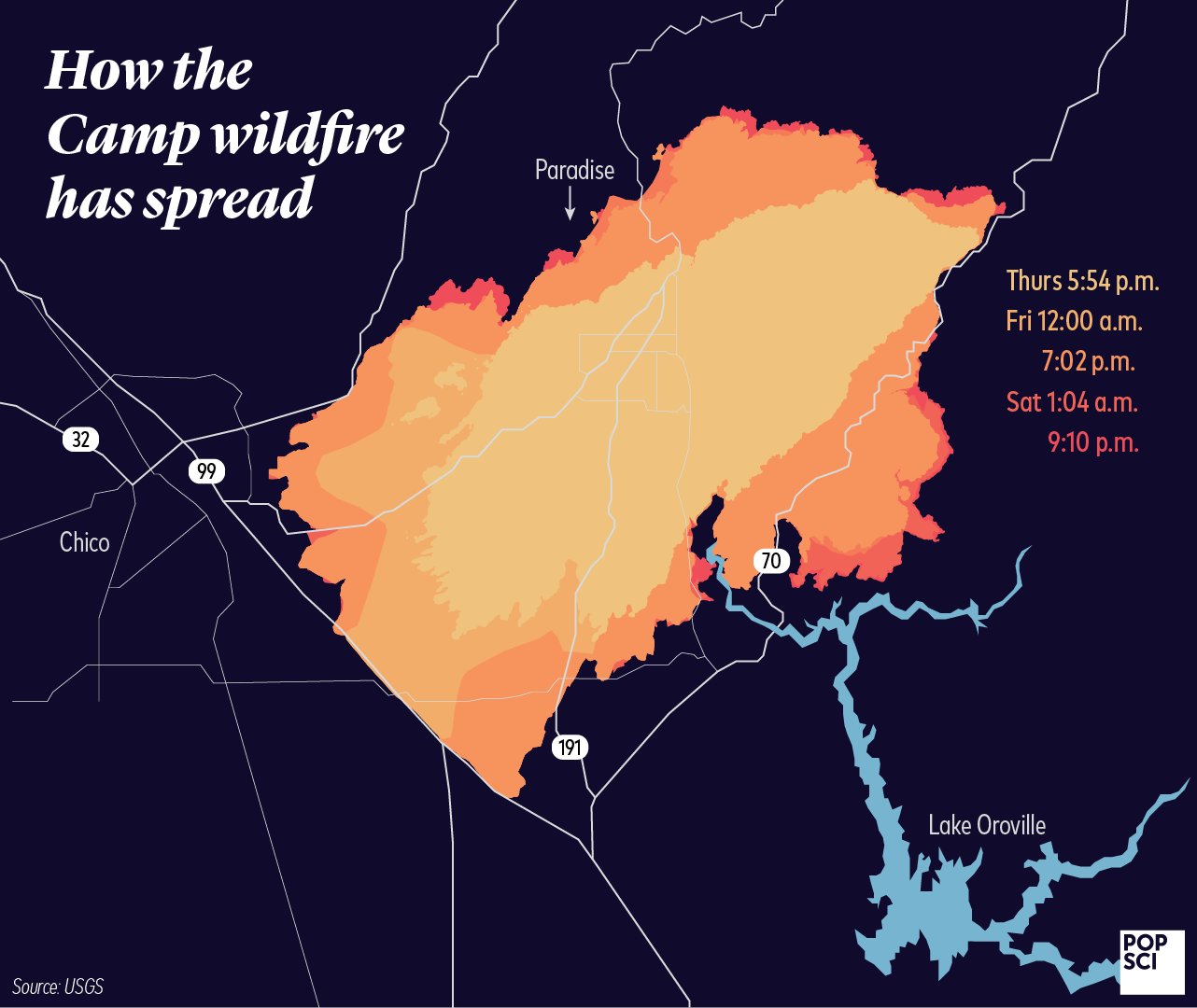


California is ablaze once again, and despite an already horrific season these new fires are still setting records.
The Camp fire that engulfed the Northern California town of Paradise is already tied for the deadliest fire California has ever seen. Officials have confirmed 63 fatalities as of Friday, and with more than 600 people unaccounted for, there could be more to come. The mayor of Paradise told the BBC that 90 percent of the town’s residential area is destroyed, and indeed the fire is California’s most destructive on record.
This and the two blazes outside of Los Angeles are being fueled by what is now an all-too-familiar combination of factors on the west coast: dry vegetation, low humidity, and high winds. Though they’re not the largest in area that the state has seen, even in recent years, the images NASA is gathering from its satellites are astounding. The Camp fire has consumed 142,000 acres thus far, while the Woolsey and Hill fires have burned 98,362 and 4,530 acres respectively.
The southern fires have received somewhat more social media attention since the Woolsey blaze ravaged the Malibu area, where a number of celebrities have homes, as well as the Paramount Ranch, which is where many movies and TV shows are filmed.

Non-celebrity residents have also been posting about the drastic effects of these recent fires, including videos and images of flame-engulfed trees and burned-out homes. The rest of the world may have gotten somewhat used to seeing these horrific visuals, but Californians are living with them more and more.
Wildfires are an increasingly common. Three of California’s largest fires ever have happened in the last five years, and that’s no coincidence. The west coast has superlative firefighting and, despite what President Trump recently claimed, excellent forest management. It’s not a lack of preparedness that’s making California so ready to burn—it’s a warming planet and a burgeoning population.
One study of human-induced changes in wildfires found that the number of acres burned in western states has doubled since the 1980s, largely due to climate change. Couple that with mass movement—in 2017, a quarter of the state’s people lived in moderate to high risk fire corridors—and you’ve got a recipe for destruction.
If you’re currently in an at-risk area, check out our guide to wildfire safety, but most importantly, pay attention to whatever information local authorities are handing out. Blazes spread faster than you might think, so it’s crucial that residents in harm’s way prepare for possible evacuation—and move quickly once given the order.
